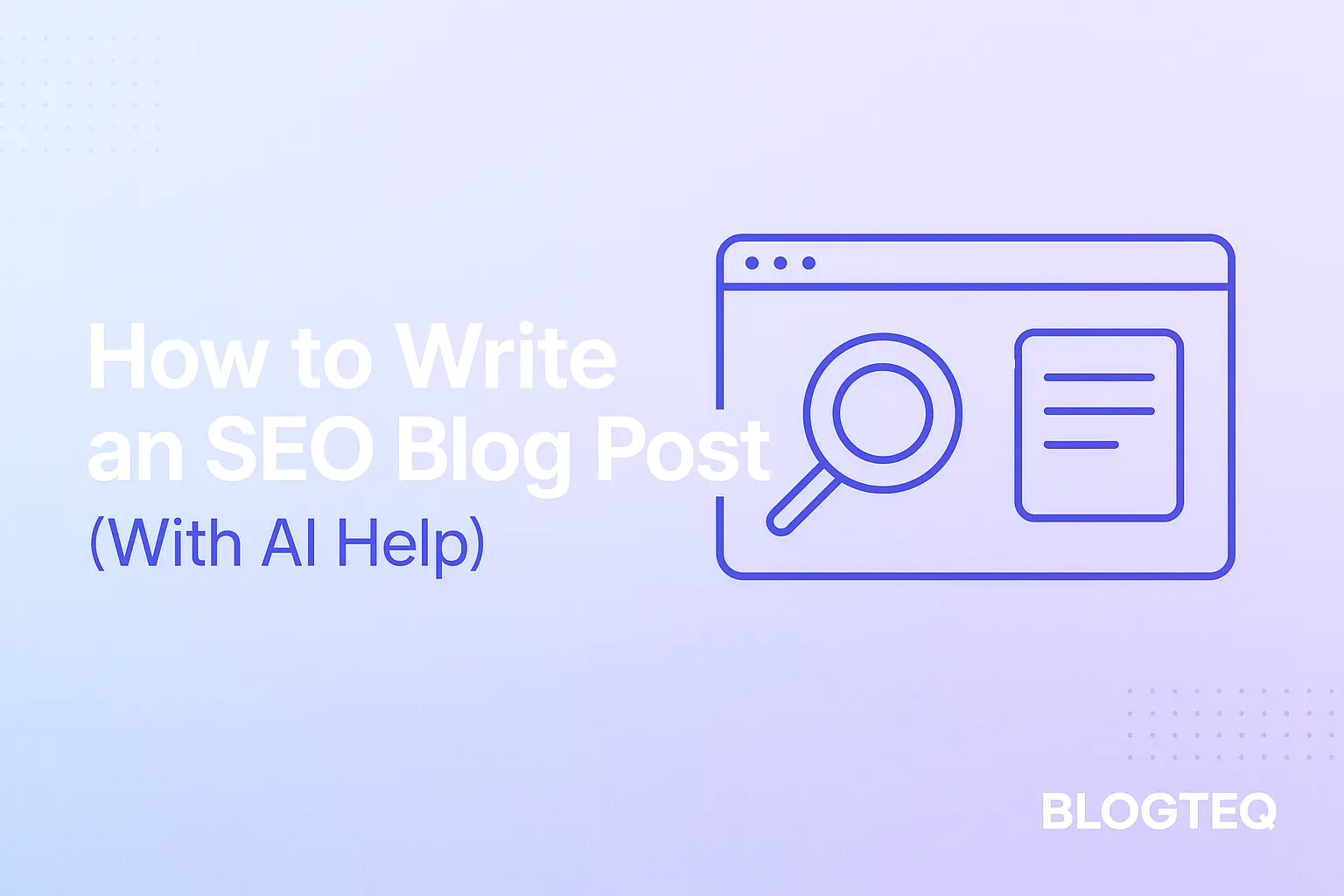Writing SEO blog posts in 2025 is no longer just about keywords and backlinks—AI assistance and structured HTML play a central role in making your content rank. In this detailed guide, we'll walk through the full workflow of creating SEO-optimized blog posts using AI tools, HTML best practices, and current search engine expectations.
Why SEO Blog Posts Still Matter
Despite the rise of AI-generated summaries and quick answers, long-form blog content continues to perform strongly. Why? Because users still need context, stories, and personalized insights. Google and Bing's algorithms still favor well-structured, trustworthy, informative content. And when done right, blog posts support your entire digital ecosystem—from organic rankings to lead generation.
Key Insight
In 2025, Google's Helpful Content Update continues to emphasize "people-first" content. Write with the intent of solving a reader's problem, use conversational tone, demonstrate E-E-A-T (Experience, Expertise, Authoritativeness, Trust), and format your page for readability.
Choosing the Right AI Tools
Here are the top AI tools that help bloggers optimize and scale their SEO content in 2025:
- ChatGPT (OpenAI): Ideal for generating outlines, intros, and Q&A sections.
- Jasper AI: Offers templates and tone guidance.
- SurferSEO: Combines keyword data and AI writing for optimization.
- Writesonic: Great for fast drafts.
- GrammarlyGO: Helps polish tone and clarity.
- Frase.io: Best for creating content briefs and generating AI drafts optimized for user intent.
- NeuralText: Combines keyword clustering with AI writing for topical authority.
Best Practice:
The best approach is hybrid: use AI to handle research, structure, and first drafts. Then, revise and personalize with human experience.
AI-Powered Blog Writing Workflow
Here's a streamlined process to write SEO blog posts using AI in 2025:
Step 1: Research the Topic
Use tools like Ahrefs, Semrush, or SurferSEO to find what people are searching. Look for long-tail keywords, People Also Ask questions, and related semantic queries.
Step 2: Generate Outline with AI
Use ChatGPT or Jasper to generate an outline. Your prompt should include the main keyword, preferred tone, and structure. Example:
"Create an outline for a blog post titled 'How to Write SEO Blog Posts with AI' in a friendly tone, including H2 and H3 headings."
Step 3: Draft Paragraphs
Have AI draft sections using your outline. Review each section for voice, accuracy, and style. Make sure to inject personal anecdotes or client examples where possible—this helps your content rank for E-E-A-T factors.
Step 4: Insert HTML Structure
As you write, structure the post with proper HTML:
<title>: SEO title<meta>: Meta description with primary keyword<h1>: Blog title<h2>: Section headings (include keywords naturally)<p>: Body paragraphs<ul>,<ol>: Lists for readability<img alt="">: Images with alt text
Step 5: Optimize Content
Ensure keyword appears in the title, first paragraph, a few subheads, and naturally in the body. Keep density between 0.5%–1%. Use synonyms and answer likely questions.
Step 6: Add Internal and External Links
Link to your own relevant posts to build topical authority. Include a few external authoritative sources (Moz, Ahrefs, Google Developer Docs).
Step 7: Use Schema and Metadata
Add Article, FAQ, and HowTo schema to increase snippet potential. Format structured data properly and validate using Google's Rich Results Test.
SEO Optimization with HTML
Proper HTML structure is key for SEO in 2025. Here's how each element should be used:
| HTML Element | Best Practice |
|---|---|
| <title> | Include primary keyword, ≤60 characters |
| <meta> | Write compelling description ≤160 characters |
| <h1> | Use once, matches blog title |
| <h2> | Major sections (target keywords here) |
| <img> | Include alt text for SEO and accessibility |
Tables, lists, and numbered steps improve readability and can help you earn featured snippets.
Voice Search & AI Snippets
To rank in voice search and appear in AI summaries:
- Phrase some subheadings as questions
- Use concise, direct answers in the following paragraph
- Add an FAQ section with schema markup
- Keep answers under 40 words for snippet eligibility
Pro Tip
AI like ChatGPT or Gemini looks for structured, clear, and helpful content. Bullet points, answer boxes, and summary tables are especially powerful.
Frequently Asked Questions
Q: What is the ideal blog length for SEO in 2025?
A: Aim for 1200–2000 words. Depth is rewarded, but only if the content remains helpful and well-structured.
Q: Can I rank with AI-generated content?
A: Yes, but only if it's edited for clarity, authority, and experience. Avoid publishing raw AI output.
Q: What's the best AI tool for beginners?
A: Jasper and ChatGPT are both intuitive. Jasper offers templates, while ChatGPT is more flexible.
Q: Should I use schema on every blog post?
A: Yes—Article schema is a must. Use FAQ, HowTo, or Product schema if your post includes those elements.
Q: How can I make my blog voice-search friendly?
A: Use conversational questions as subheadings, short answers (under 40 words), and clean HTML.
Conclusion and Action Plan
By combining AI tools with structured HTML and smart SEO strategies, you can write blog posts that rank, convert, and scale.
✅ Recap:
- Use AI for outlines, drafts, and meta tags
- Follow HTML structure: titles, headings, schema
- Prioritize people-first content and voice optimization
- Include FAQs, answer boxes, and alt tags
- Edit for clarity, E-E-A-T, and reader experience
AI won't replace human creativity—it enhances it. Use it wisely, and your content can top the SERPs and stay relevant in the AI-powered internet era.
